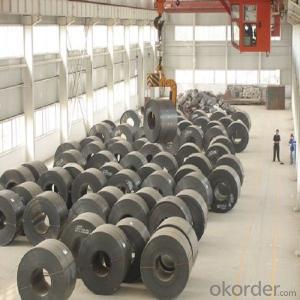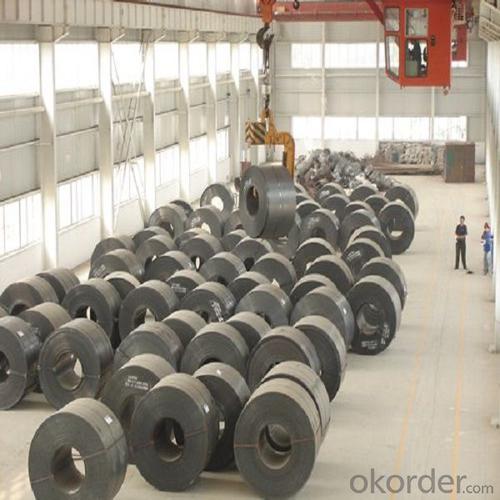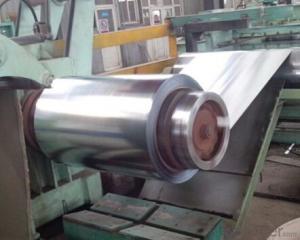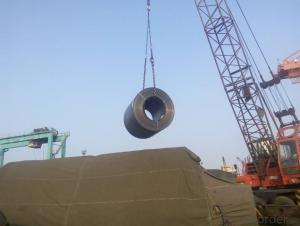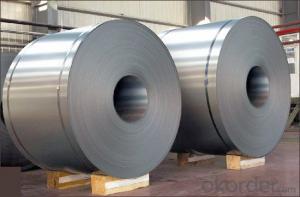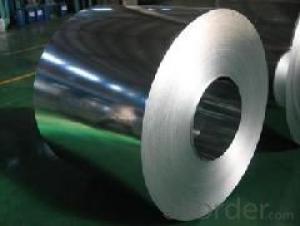Hot Dipped Cold Rolled Steel Coil Chinese Supplier
- Loading Port:
- China main port
- Payment Terms:
- TT OR LC
- Min Order Qty:
- 25 m.t.
- Supply Capability:
- 50000 m.t./month
OKorder Service Pledge
OKorder Financial Service
You Might Also Like
Specification
Detailed information--Galvanized Steel Coil
| Description | hot dipped galvanized steel coil, galvanized steel coil |
| Type | SGCC,SGCD,SPCC,SGHC,Q235,DC51D,DX51D,G350,G450,G550 |
| Thickness | 0.12-2.0 mm |
| Width | 500-1250mm |
| Length | coil |
| Zinc coated | Z30-Z300 |
| Coil Weight | 2.5-8 tons |
| Standard | ASTM A240,GB/T3280-2007,JIS4304-2005,ASTM A167,EN10088-2-2005,etc |
| Application | Roofing sheet and PPGI base and Build materials. |
Other information--Galvanized Steel Coil
| Certificate | SGS BV API |
| Brand | SISCO |
| Productivity | 10000 tons per month |
| Packing | Standard export sea-worthy packing |
| Delivery time | 10-30 days |
| Note | Our company has cooperative relation between the domestic agents. steel sheet can be made accordingto the customers requirements. Fasten delivery. Quality assured. |
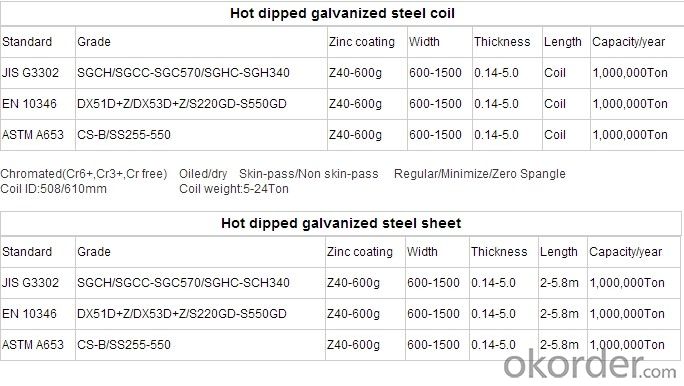

Products Picture:
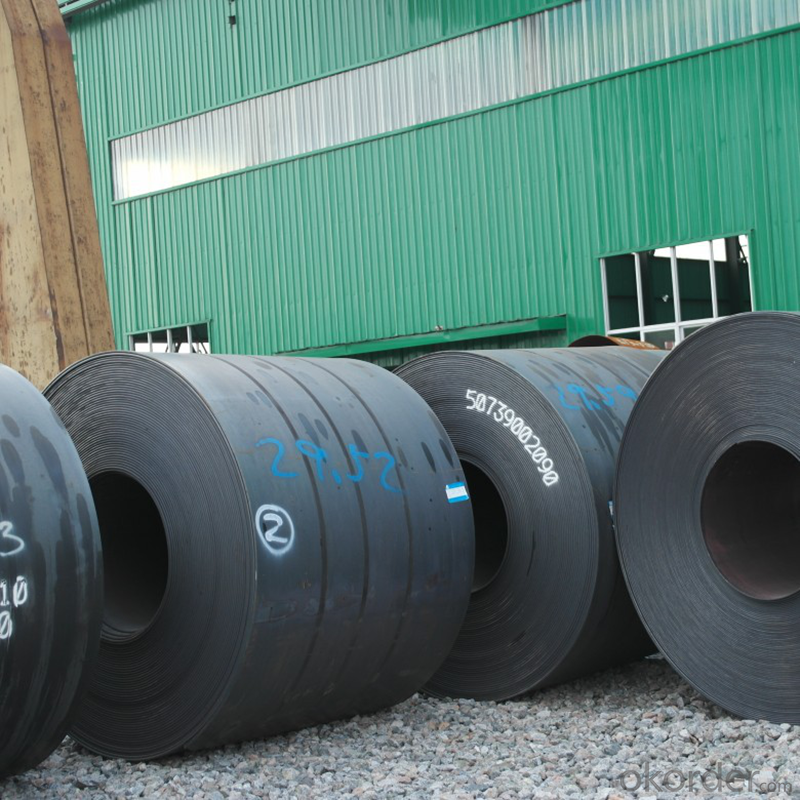
FAQ
1. Q: What's the MOQ?
A: Our MOQ is 25mt.
2. Q: What's the delivery time?
A: It will take about 30 days after TT or L/C.
3. Q: What is the payment terms?
A: T/T, L/C at sight
4. Q: How does your factory carry out quality control?
A: We attach great importance to quality control.Every part of our products has its own QC.
5. Q: What certificate do you have?
A: We have SGS, ISO9001 etc. Also we can apply any certificate if you need if the qty is OK.
- Q: What are the main characteristics of galvanized steel coils?
- The main characteristics of galvanized steel coils include a protective zinc coating that prevents corrosion, high strength and durability, excellent formability and weldability, and a smooth and shiny surface finish.
- Q: What are the environmental considerations when using steel coils?
- Some environmental considerations when using steel coils include the emissions and energy consumption associated with the production and transportation of the coils, as well as the potential for waste generation during processing and disposal. It is important to ensure that steel production practices adhere to sustainable and eco-friendly standards to minimize the environmental impact. Additionally, proper handling and recycling of steel coils at the end of their life cycle is crucial to reduce resource depletion and waste accumulation.
- Q: What are the challenges in the production of steel coils?
- The production of steel coils faces several challenges. Firstly, one of the major challenges is ensuring consistent quality throughout the production process. Steel coils need to have uniform thickness, width, and flatness. Achieving this consistently can be challenging due to variations in raw materials, equipment, and operating conditions. Another challenge is managing the high temperatures involved in the production process. Steel coils are produced by heating steel slabs or billets to extremely high temperatures and then rolling them into coils. Maintaining the required temperatures and ensuring proper cooling can be a complex task, as any deviations can lead to inconsistencies in the final product. Furthermore, the production of steel coils requires a significant amount of energy. The steel industry is one of the largest energy consumers globally. Reducing energy consumption while maintaining production efficiency is a constant challenge. Implementing energy-efficient technologies and optimizing processes are necessary to address this challenge. Moreover, the production of steel coils generates a considerable amount of waste and emissions. Steel manufacturing involves various chemical reactions and releases pollutants such as carbon dioxide, sulfur dioxide, and particulate matter. Managing and minimizing these emissions to comply with environmental regulations is a significant challenge for the industry. Additionally, steel coils are often produced in large quantities, requiring efficient logistics and transportation systems. Ensuring timely delivery and minimizing damage during transportation can be a challenge due to the weight and size of the coils. Lastly, the steel industry faces market challenges, including fluctuating prices of raw materials, competition from other materials, and global economic conditions. Adapting to market demands and maintaining competitiveness is crucial for the sustainable production of steel coils. Overall, the challenges in the production of steel coils include maintaining consistent quality, managing high temperatures, reducing energy consumption and emissions, optimizing logistics and transportation, and adapting to market dynamics. Addressing these challenges requires continuous innovation, technological advancements, and a focus on sustainability.
- Q: What is the shelf life of a steel coil?
- The duration for which a steel coil remains usable depends on several factors, including the type of steel, storage conditions, and protective measures implemented. Steel coils can generally be stored for a few months to several years. If a steel coil is stored appropriately in a controlled environment with suitable temperature, humidity, and ventilation, its lifespan can be extended. Moreover, if the coil is coated with protective substances like oil or anti-corrosion coatings, its shelf life can be further prolonged. However, if a steel coil is exposed to unfavorable storage conditions such as high humidity, extreme temperatures, or corrosive substances, its shelf life can significantly decrease. Rust and corrosion can occur due to exposure to moisture and oxygen, leading to a decline in quality and structural integrity. To maximize the shelf life of a steel coil, it is crucial to store it in a well-ventilated, dry area, away from direct sunlight and corrosive substances. Regular inspections and maintenance, including cleaning and reapplication of protective coatings, can also help preserve the coil's quality. Ultimately, it is essential to consult the manufacturer or supplier of the steel coil for specific recommendations regarding shelf life, as different types of steel may have varying levels of durability and specific storage requirements.
- Q: how is stainless steel made? what are the things used in making it?
- There are 3 basic stainless steels. The Martinsitic, the ferritic, and the Austinistic. The spelling may be wrong on all of them. (Got out of school in 1966 with my metallurgy in 1965. The Ferritic is magnetic and has some resistance to corrosion but the Martinsitic is much more resistant to corrosion. The Austinitic stainless is very resistant to corrosion. The differences are the amount of Chrome and Nickel in the batches. The Austinitic has an 18/8 ratio of Chromium and Nickel with the rest Iron and minor ingredients. The carbon content is very important and these steels are often made in small batches with close monitoring of composition and carbon content. Scrap metals are frequently used with the chrome and nickel being added as carefully selected scrap or even fresh crude stocks. Electric melting is frequent to avoid contamination.
- Q: Can steel coils be coated with magnetically attractive materials?
- Yes, steel coils can be coated with magnetically attractive materials. This process is commonly known as electromagnetic coating or magnetic coating, where a thin layer of magnetically attractive material, such as iron or nickel, is applied onto the surface of the steel coil. This coating enhances the magnetic properties of the steel, making it more responsive to magnetic fields and enabling it to attract or be attracted by magnets.
- Q: How are steel coils annealed for improved properties?
- Steel coils are annealed for improved properties by heating them to a specific temperature and holding them at that temperature for a certain period of time. This process allows the steel to undergo recrystallization, which helps relieve internal stresses and improve its ductility and toughness. After annealing, the steel coils are slowly cooled, further enhancing their mechanical properties.
- Q: What are the different types of steel coil slitting machines?
- There are several different types of steel coil slitting machines, including manual slitters, semi-automatic slitters, and fully automatic slitters. Manual slitters require manual adjustment and operation, while semi-automatic slitters have some automated features but still require some manual intervention. Fully automatic slitters are the most advanced type, with fully automated controls and high-speed operation.
- Q: What are the common coil defects and their causes?
- Some common coil defects include edge wave, center buckle, oil canning, and coil breaks. These defects can occur due to various causes such as improper tension during the coiling process, uneven cooling, material defects, or inadequate lubrication.
- Q: What are the common processing defects in steel coils?
- The common processing defects in steel coils include surface imperfections such as scratches, dents, and stains, as well as edge wave, coil set, camber, and crossbow. Other defects may include coil breaks, oil spots, rust, and uneven thickness or width variation.
Send your message to us
Hot Dipped Cold Rolled Steel Coil Chinese Supplier
- Loading Port:
- China main port
- Payment Terms:
- TT OR LC
- Min Order Qty:
- 25 m.t.
- Supply Capability:
- 50000 m.t./month
OKorder Service Pledge
OKorder Financial Service
Similar products
Hot products
Hot Searches
Related keywords
